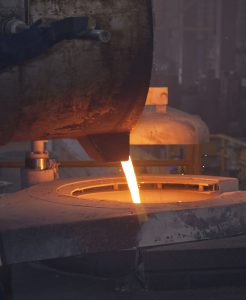Air Emissions Information for Metal Casters

The latest air emissions/exposure topic to address for metalcasters is the new rule from Federal Occupational Health and Safety (OSHA) on crystalline silica exposure released March 24, 2016. The rule will lower the permissible exposure for crystalline silica to 50 micrograms per cubic meter of air (50 μg/cu.m), averaged over an eight-hour shift, from the current 100 μg/cu.m.
Metalcasting businesses also will be required to use engineering controls and work practices to limit worker exposure and access to high exposure areas, train workers, and provide medical exams. The standard for general industry will take effect June 23, 2016, and metalcasters will have two years to come into compliance with most requirements. The American Foundry Society (AFS) has a useful resource page addressing the rule.
Other air emissions topics are addressed in the following:
- The National Emission Standards for Hazardous Air Pollutants (NESHAPs) include major sources and area sources. The MPCA incorporates major source standards into facility permits and enforces the requirements. The Environmental Protection Agency (EPA) enforces the area source standards. NESHAPs are an additional federal standard beyond an air permit. The MPCA Small Business Environmental Assistance Program (SBEAP) can help most metal casters in Minnesota understand their requirements under these rules.
- All the federal rule making for the industry is found on the EPA website
- 10 Questions for Metalcasters on Fine Particulate are answered in a 2015 Modern Casting article by the AFS air quality committee.
- Indoor Air Quality Issues for Foundries, Electric Power Research Institute (2000). A comprehensive (somewhat dated) review.